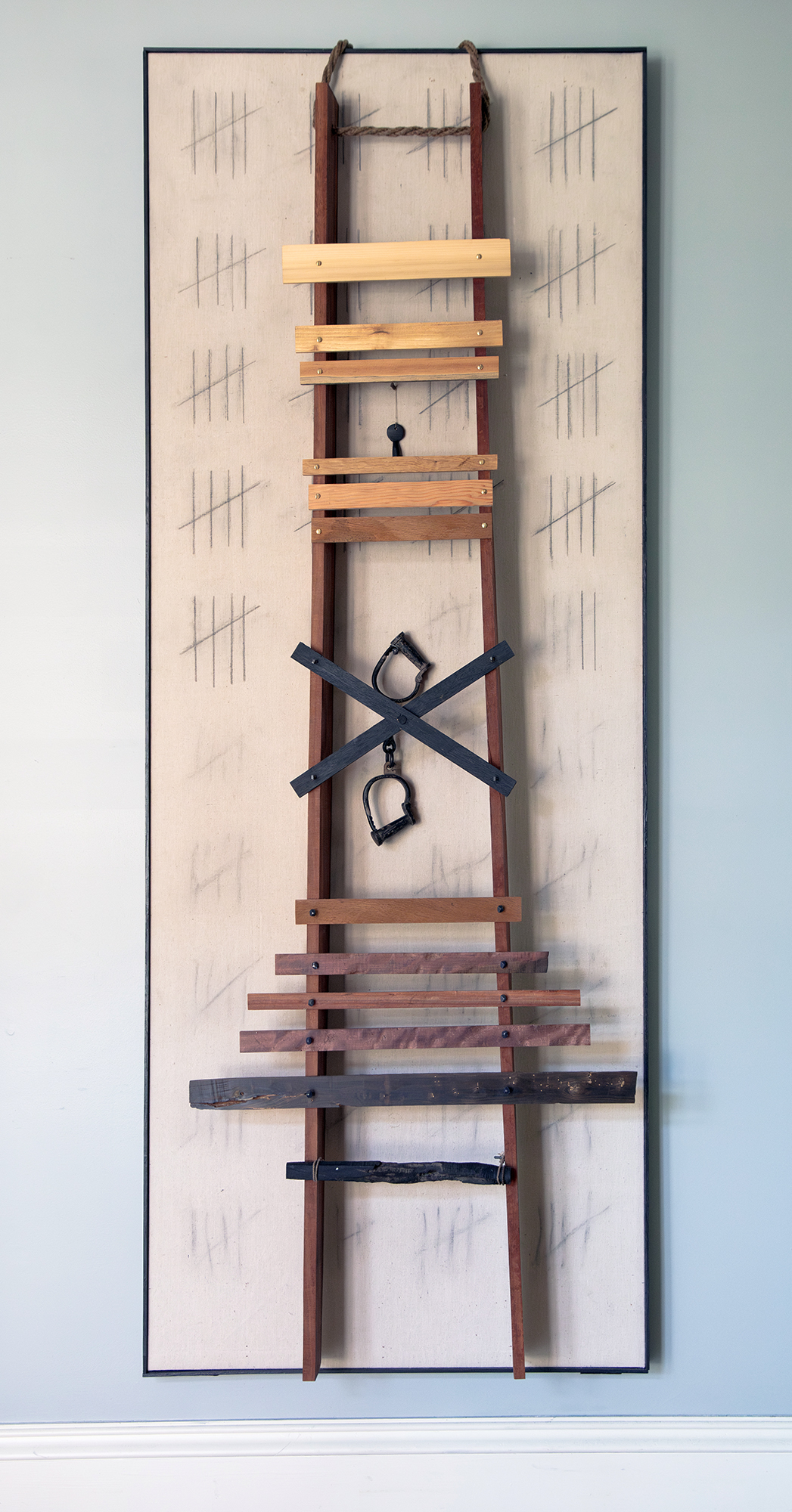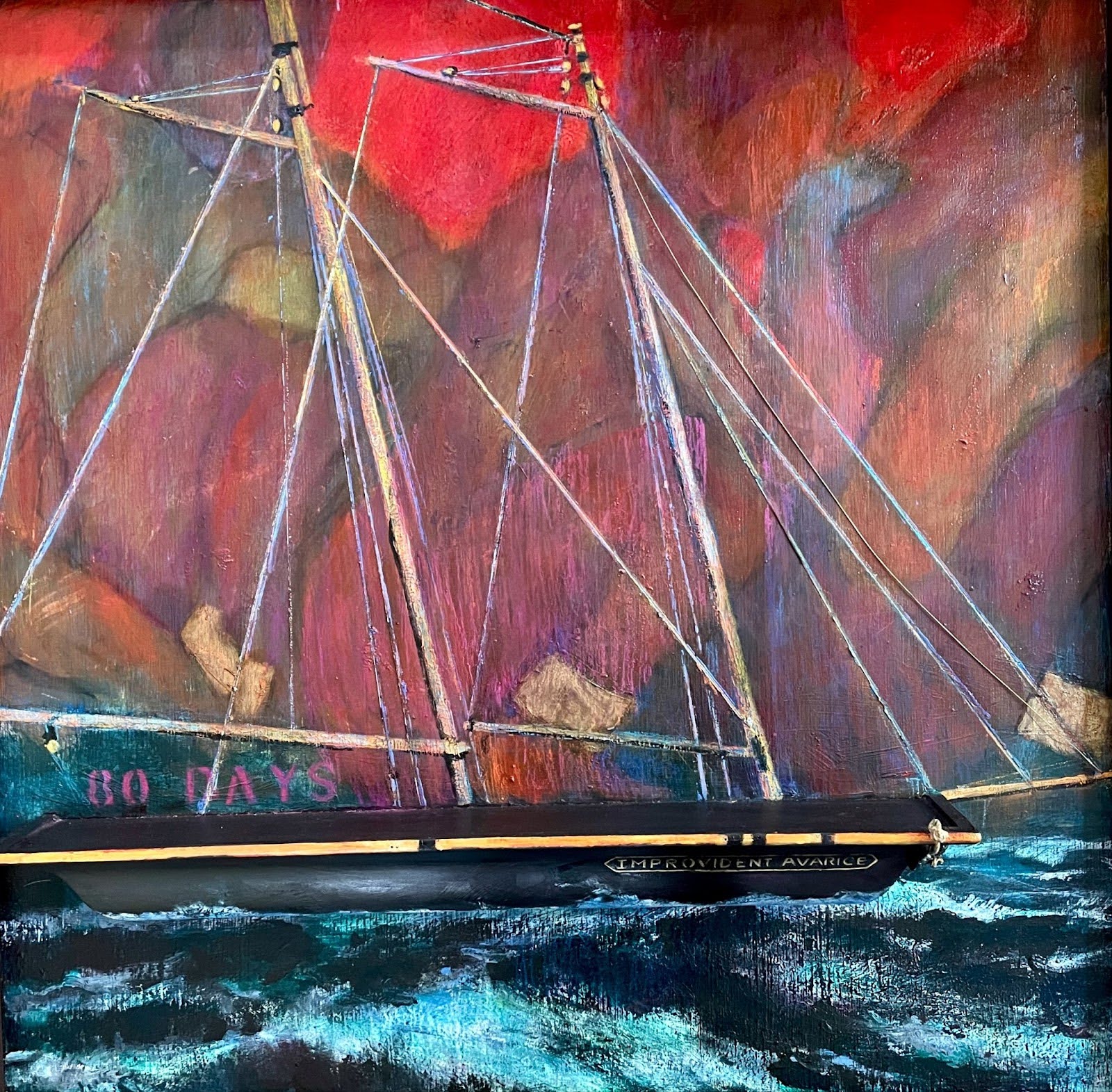Charcoal tally marks are stacked across the canvas behind a wooden ladder with rungs in varying shades, widths and lengths. Some of the marks are rubbed out while others remain clearly defined. At the center of the ladder, behind two black crossed rungs, slave shackles hang from a handcrafted iron nail. The entire piece, just larger than the average human body, slowly reveals an ominous portrait of history while bringing light to the memories of the enslaved people of the Slaving Brig Sally owned by Nicholas Brown and Co., founders of Brown University.

“The Tally,” (Voyage of the Slaving Brig Sally 1764–1765) was created in 2022 by artist Pamela Pike Gordinier as part of a years-long social justice project sparked by the murder of George Floyd. Using art and history to encourage dialogue to promote learning, healing and change, the project and book entitled “3 Steps Forward – 2 Steps Back, Addressing Racial Justice Through Art,” was a collaboration between Gordinier and Simmons Center Visiting Scholar and Adjunct Lecturer Akeia de Barros Gomes. Throughout this collaboration, Gordinier researched and responded emotionally and artistically to historical events and archives related to global racism, the Transatlantic Slave Trade, and Black U.S. history through the present. de Barros Gomes responded to her pieces and themes in the work with written personal commentary and historical context. Both women saw this collaborative project as a unique opportunity to teach Black history by illuminating actual events and facts.
After reading Brown University’s landmark “Slavery & Justice Report,” Gordinier learned about the Account Book of the Sally and was inspired to create “The Tally.” The marks on the canvas represent the 196 enslaved people itemized in the Sally’s Account Book, which included men, women, and children. Of those 196, 87 lived (dark marks) and 109 died from insurrection, disease, despair, or starvation (erased marks). During a talk at the Simmons Center about the project on June 9, 2025, Gordinier expressed how difficult the process of making the piece was. “As I drew the mark on the canvas, I felt as though I was actually putting that person aboard the ship. I became part of their enslavement, dooming them to an unthinkable life. The worst part, however, was the physical act of erasing the mark, obliterating the charcoal line—but more than that—a human life. I actually wondered who that person was, what they looked like, and if their family was aboard,” Gordinier reflected.
“The thought crossed my mind, ‘What if I didn’t erase the mark? What would happen?’" Gordinier continued. "I had now crossed the line from making a piece of art into becoming part of the art. This has happened before, but never so much as doing this work about racial justice."
The piece was created using materials that would have been used in slave ships: various woods, rope, canvas, and shackles, which were donated by Mystic Seaport Museum. Accomplished Shipwright Nathan Adams made the ladder. Blacksmith Bill Scheer made these shackles for movies such as “Twelve Years a Slave.” The materials’ physicality and symbolism are important aspects in this and many of the other pieces in the series.
Public Humanities projects like Reimagining New England Histories, a partnership between Mystic Seaport Museum and the Simmons Center among other institutional, Tribal, and community partners, brought together Gordinier, de Barros Gomes and the Simmons Center. As a result of these collaborations, Gordinier and de Barros Gomes felt that “The Tally,” and another piece from the series, “Voices from the Middle Passage” (2022), would be best contextualized and appreciated by the faculty, students, researchers, and visitors to the Simmons Center, as they share so much history with the Center itself.

